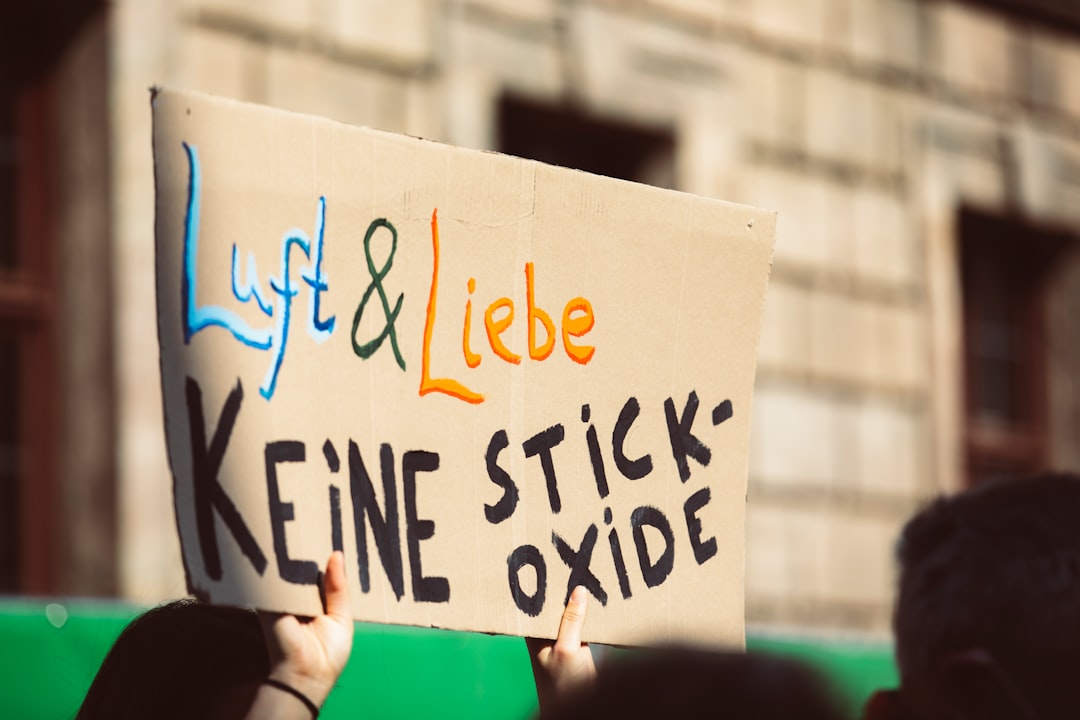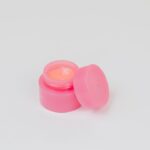Aftercare is a crucial component of the diode laser hair removal process that you should never overlook. While the treatment itself is designed to effectively reduce hair growth, the way you care for your skin afterward can significantly influence the results and your overall experience. Proper aftercare not only helps in minimizing side effects but also enhances the effectiveness of the treatment.
By following a well-structured aftercare routine, you can ensure that your skin heals properly and that you achieve the smooth, hair-free skin you desire. Moreover, aftercare plays a vital role in preventing complications such as irritation, infection, or hyperpigmentation. Your skin may be sensitive and vulnerable immediately following the procedure, making it essential to treat it with care.
By adhering to aftercare guidelines, you can mitigate discomfort and promote a faster recovery. This attention to detail can make all the difference in your satisfaction with the results, allowing you to enjoy the benefits of diode laser hair removal without unnecessary setbacks.
Key Takeaways
- Aftercare is crucial for successful diode laser hair removal, as it helps to minimize side effects and promote optimal healing.
- Understanding the healing process after diode laser hair removal is important to set realistic expectations and ensure proper care.
- Tips for managing discomfort and redness after treatment include using cold compresses and avoiding hot showers or baths.
- A proper skincare routine for post-laser hair removal should include gentle cleansing, moisturizing, and sunscreen application.
- Avoiding sun exposure and protecting treated areas from UV rays is essential to prevent hyperpigmentation and other complications.
Understanding the Healing Process After Diode Laser Hair Removal
Understanding the healing process is key to navigating your post-treatment experience effectively. After undergoing diode laser hair removal, your skin will go through several stages of healing. Initially, you may notice some redness and swelling in the treated areas, which is a normal response as your body begins to heal.
This reaction typically subsides within a few hours to a couple of days, depending on your skin type and sensitivity. Recognizing these signs can help you manage your expectations and prepare for what lies ahead. As your skin continues to heal, you may experience some mild discomfort or a sensation similar to sunburn.
This is part of the natural healing process as your skin repairs itself. During this time, it’s essential to be gentle with your skin and avoid any harsh products or treatments that could exacerbate irritation. Understanding this timeline allows you to take proactive steps in your aftercare routine, ensuring that you support your skin’s recovery while minimizing any potential side effects.
Tips for Managing Discomfort and Redness After Treatment
Managing discomfort and redness after diode laser hair removal is essential for a smooth recovery. One effective way to alleviate these symptoms is by applying a cool compress to the treated areas. This simple method can help reduce inflammation and soothe your skin, providing immediate relief from any discomfort you may be experiencing.
You can use a clean cloth soaked in cool water or even ice wrapped in a towel for this purpose. Just be sure not to apply ice directly to your skin to avoid frostbite. In addition to cool compresses, over-the-counter anti-inflammatory medications can also be beneficial in managing discomfort.
Non-steroidal anti-inflammatory drugs (NSAIDs) like ibuprofen can help reduce swelling and pain, making your recovery more comfortable. However, it’s always wise to consult with your healthcare provider before taking any medication, especially if you have underlying health conditions or are taking other medications. By combining these methods, you can effectively manage any discomfort and redness, allowing you to focus on enjoying the results of your treatment.
Proper Skincare Routine for Post-Laser Hair Removal
| Skincare Step | Description |
|---|---|
| Cleansing | Gently cleanse the treated area with a mild, non-abrasive cleanser to remove any impurities and excess oils. |
| Moisturizing | Apply a gentle, fragrance-free moisturizer to keep the skin hydrated and promote healing. |
| Sun Protection | Use a broad-spectrum sunscreen with SPF 30 or higher to protect the treated area from sun exposure. |
| Avoiding Irritants | Avoid using harsh exfoliants, alcohol-based products, and perfumed lotions that can irritate the skin. |
| Follow-up Appointments | Attend all scheduled follow-up appointments with your dermatologist to monitor the progress and address any concerns. |
Establishing a proper skincare routine after diode laser hair removal is vital for promoting healing and maintaining the results of your treatment. Start by cleansing the treated areas gently with a mild, fragrance-free cleanser.
Instead, focus on keeping your skin clean and hydrated to support its recovery process. Moisturizing is another critical aspect of your post-laser skincare routine.
Applying moisturizer regularly will not only keep your skin comfortable but also create a protective barrier that aids in healing. Remember to be gentle when applying products; patting rather than rubbing will help prevent further irritation.
Avoiding Sun Exposure and Protecting Treated Areas
One of the most important aspects of aftercare following diode laser hair removal is avoiding sun exposure. Your skin will be particularly sensitive after treatment, making it more susceptible to sunburn and pigmentation changes. It’s crucial to stay out of direct sunlight for at least two weeks post-treatment.
If you must go outside, wearing protective clothing and seeking shade can help shield your skin from harmful UV rays. In addition to avoiding direct sun exposure, applying a broad-spectrum sunscreen with an SPF of 30 or higher is essential when venturing outdoors. This will protect the treated areas from UV damage and help prevent complications such as hyperpigmentation or scarring.
Reapply sunscreen every two hours if you’re spending extended periods outside, and consider using a physical sunscreen containing zinc oxide or titanium dioxide for added protection. By taking these precautions, you can safeguard your skin while it heals and ensure optimal results from your diode laser hair removal.
Hydration and Nutrition for Optimal Healing
Hydration: The Key to Skin Elasticity
Drinking plenty of water is essential for maintaining skin elasticity and promoting overall health. Staying well-hydrated helps flush out toxins from your body and can aid in reducing inflammation, which is particularly beneficial during your recovery period.
Nutrition for Enhanced Healing
In addition to hydration, focusing on a balanced diet rich in vitamins and minerals can further enhance your healing process. Foods high in antioxidants, such as fruits and vegetables, can help combat inflammation and promote skin health.
Omega-3 Fatty Acids for Skin Repair
Incorporating omega-3 fatty acids found in fish or flaxseeds can also support skin repair and reduce redness. By prioritizing both hydration and nutrition, you create an environment conducive to healing, allowing your skin to recover more effectively after treatment.
Managing Ingrown Hairs and Other Post-Treatment Issues
Ingrown hairs can be a common concern following diode laser hair removal, but there are effective strategies for managing this issue. One of the best ways to prevent ingrown hairs is by exfoliating gently once your skin has healed sufficiently—typically about one week post-treatment. Using a soft washcloth or an exfoliating scrub can help remove dead skin cells that may trap hairs beneath the surface.
However, be cautious not to over-exfoliate or use harsh products that could irritate your sensitive skin. If you do experience ingrown hairs despite preventive measures, there are several options for management. Applying warm compresses can help soothe the area and encourage the hair to break through the skin’s surface.
In some cases, using a sterile needle or tweezers may be necessary to gently lift the ingrown hair without causing further irritation or infection. Always remember to keep the area clean and avoid picking at ingrown hairs to minimize the risk of scarring or infection.
Follow-Up Care and Maintenance for Long-Term Results
Follow-up care is essential for ensuring long-term results after diode laser hair removal. Scheduling regular maintenance sessions as recommended by your practitioner will help maintain smooth skin and prevent hair regrowth over time. Typically, follow-up treatments are spaced several weeks apart, allowing you to target any remaining hair follicles effectively while ensuring optimal results.
In addition to professional follow-up care, maintaining a consistent at-home skincare routine is vital for prolonging the effects of your treatment. Continue using gentle cleansers and moisturizers while protecting your skin from sun exposure with sunscreen daily. By combining professional care with diligent at-home practices, you can enjoy long-lasting results from your diode laser hair removal journey while keeping your skin healthy and radiant for years to come.
After undergoing diode laser hair removal, it is crucial to follow proper aftercare instructions to ensure the best results. One related article that provides valuable information on post-treatment care is this article on the In Laser Hair Removal website. This article discusses the importance of protecting your skin from sun exposure, avoiding certain skincare products, and staying hydrated to promote healing and prevent complications. By following these aftercare tips, you can maintain smooth and hair-free skin for longer periods.
FAQs
What is diode laser hair removal aftercare?
Diode laser hair removal aftercare refers to the steps and precautions that should be taken after undergoing a diode laser hair removal treatment to ensure optimal results and minimize any potential side effects.
What are some common aftercare instructions for diode laser hair removal?
Common aftercare instructions for diode laser hair removal may include avoiding sun exposure, using sunscreen, avoiding hot showers and saunas, avoiding certain skincare products, and keeping the treated area clean and moisturized.
How long do I need to follow diode laser hair removal aftercare instructions?
Aftercare instructions for diode laser hair removal should be followed for the duration recommended by your laser technician or dermatologist, which is typically a few weeks to a month after each treatment session.
Why is it important to follow diode laser hair removal aftercare instructions?
Following diode laser hair removal aftercare instructions is important to ensure the best results from the treatment and to minimize the risk of potential side effects such as skin irritation, hyperpigmentation, or burns.
Can I resume my normal skincare routine after diode laser hair removal?
It is important to consult with your laser technician or dermatologist before resuming your normal skincare routine after diode laser hair removal, as certain products or treatments may need to be avoided for a period of time.
What should I do if I experience any adverse reactions after diode laser hair removal?
If you experience any adverse reactions after diode laser hair removal, such as excessive redness, swelling, or blistering, it is important to contact your laser technician or dermatologist immediately for further guidance and treatment.








